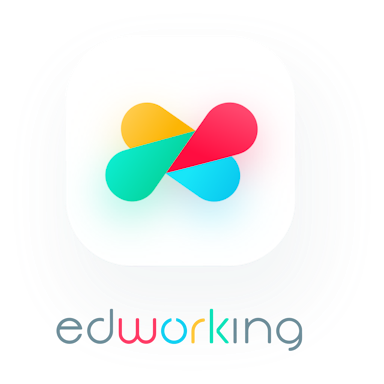In the bustling world of modern business, efficiency and productivity are king. As organizations search for ways to streamline their operations and drive innovation, business process modeling (BPM) emerges as a crucial tool. But what exactly is BPM, and how can your organization harness its power? In this comprehensive guide, we'll explore BPM's ins and outs, examine its benefits, and provide actionable insights to help you succeed.
 Understanding Business Process Modeling
Understanding Business Process Modeling
What is Business Process Modeling?
Business process modeling is a method for visually representing an organization's processes and workflows. By creating a detailed model, companies can better understand how their operations function, identify areas of improvement, and implement effective solutions. In essence, BPM is like a roadmap that guides businesses toward enhanced efficiency and innovation.
Why is BPM Important?
BPM plays a vital role in helping organizations reach their full potential. Here are some key benefits:
- Optimized processes: BPM allows you to pinpoint inefficiencies and develop targeted solutions for improvement.
- Enhanced communication: Visualizing processes fosters understanding and collaboration among team members, ensuring everyone is on the same page.
- Reduced errors: By streamlining processes and eliminating redundancies, BPM minimizes the likelihood of mistakes.
- Scalability: A well-documented process model provides a solid foundation for growth and expansion.
 The BPM Lifecycle: A Step-by-Step Guide
The BPM Lifecycle: A Step-by-Step Guide
The Five Phases of Business Process Modeling
Embarking on the BPM journey may seem daunting, but breaking it down into five essential phases can make the process more manageable:
- Discovery: Analyze your current processes to understand their structure, identify inefficiencies, and pinpoint opportunities for improvement. This step involves gathering information, conducting interviews, and observing workflows.
- Analysis: Examine your process model in depth to identify bottlenecks, redundancies, and areas where optimization can be achieved. This phase may involve calculating key performance indicators (KPIs) and using root cause analysis to determine the underlying issues.
- Design: Redesign and reorganize your processes to address identified inefficiencies and achieve desired outcomes. This step requires creativity, collaboration, and a focus on process innovation.
- Implementation: Introduce the new process design, incorporating necessary changes and training team members to ensure a smooth transition. Effective change management strategies are crucial during this phase.
- Monitoring: Continuously track and measure the performance of your processes using KPIs and other metrics. Make adjustments as needed to maintain optimal efficiency and adapt to evolving business needs.
 BPM Techniques and Tools: Finding the Right Fit
BPM Techniques and Tools: Finding the Right Fit
Popular BPM Techniques
There are numerous BPM techniques available, each with its unique strengths and applications. Here are a few popular options:
Flowcharts
A versatile, easy-to-understand tool for visualizing process steps and decision points. Flowcharts provide a high-level view of your processes and can be adapted to various industries and workflows.

BPMN (Business Process Model and Notation)
A widely-used graphical notation for process modeling, offering an extensive range of symbols and elements. BPMN is designed specifically for business process modeling and is well-suited for complex workflows.
Value Stream Mapping
A lean technique that emphasizes waste elimination and value-added activities optimization. Value stream mapping is particularly useful for manufacturing and production processes.
BPM Software and Tools
While traditional tools like pen and paper can get you started, there is an array of BPM software and tools available to streamline your efforts. When choosing a tool, consider features such as process mapping, automation, and analytics.
One platform that can complement your BPM efforts is Edworking, an all-in-one productivity solution for teams and remote work management. By consolidating task management, file sharing, workspaces, meetings, and stories into a single platform, Edworking helps your team collaborate and innovate more effectively.
 Best Practices for Successful BPM
Best Practices for Successful BPM
Involve the Right People
BPM success hinges on collaboration. Engage team members from various departments to ensure diverse perspectives and a comprehensive understanding of your processes. Cross-functional teams can offer valuable insights and facilitate buy-in from all stakeholders.
Keep It Simple
Avoid overcomplicating your BPM efforts. Start with a high-level view of your processes and gradually drill down into finer details as needed. Focus on clarity and simplicity to ensure your process models are easily understood and actionable.
Make It Actionable
A process model is only as valuable as the improvements it drives. Transform your BPM insights into actionable steps to optimize your processes and achieve tangible results. Develop a clear plan for implementing changes, and monitor progress to ensure success.
Continuous Improvement
BPM is not a one-time exercise; it's an ongoing pursuit of excellence. Cultivate a culture of continuous improvement, and routinely revisit your process models to adapt to changing business needs and objectives. Embrace change and strive for constant growth.
 Overcoming Common BPM Challenges
Overcoming Common BPM Challenges

Resistance to Change
Change can be intimidating, and it's natural for employees to resist new processes. Foster open communication and address concerns to facilitate a smooth transition. Demonstrating the benefits of BPM and involving team members in the process can help ease resistance.
Insufficient Resources
BPM efforts can be resource-intensive. Allocate adequate time, personnel, and budget to ensure a successful outcome. It's crucial to secure buy-in from top management to garner the necessary resources and support.
Inadequate Documentation
Thorough and accessible process documentation is critical for effective BPM. Ensure your process models are clear, concise, and easily accessible to all stakeholders. Proper documentation enables better understanding, communication, and implementation of process improvements.
 The Future of Business Process Modeling
The Future of Business Process Modeling
The Role of Automation and AI
As technology advances, BPM is poised to become increasingly automated and intelligent. Artificial intelligence (AI) and machine learning algorithms can help identify patterns, predict outcomes, and generate insights, paving the way for more sophisticated process optimization.
Embracing Agility
In a rapidly evolving business landscape, BPM must be agile and adaptable. Embrace an iterative approach to BPM, with frequent iterations and adjustments to stay ahead of the curve. Adopting agile methodologies can empower your organization to respond effectively to changing market conditions and customer needs.
 Conclusion
Conclusion
And there you have it - a comprehensive and practical guide to mastering the art of business process modeling. By understanding the BPM lifecycle, exploring various techniques and tools, adopting best practices, and overcoming challenges, your organization can unlock the true potential of BPM. So, are you ready to embark on your BPM journey? Remember, the key lies in continuous improvement and embracing change. Let's join forces and build a more efficient, agile, and innovative future together!





